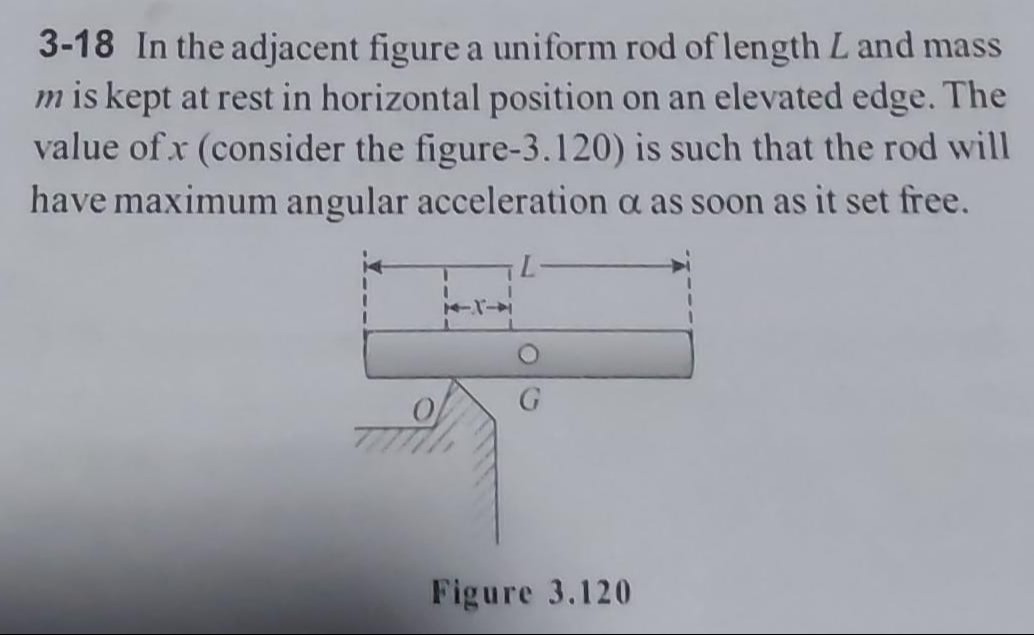Question
Question: In the adjacent figure a uniform rod of length $L$ and mass $m$ is kept at rest in horizontal positi...
In the adjacent figure a uniform rod of length L and mass m is kept at rest in horizontal position on an elevated edge. The value of x (consider the figure-3.120) is such that the rod will have maximum angular acceleration α as soon as it set free.

x=2L(1−31)
Solution
The angular acceleration α of the rod about the pivot point O is given by α=Iτ, where τ is the torque and I is the moment of inertia about O. The weight of the rod is mg, acting at the center of mass G. The distance of G from the left end is L/2. The pivot O is at a distance x from the left end. The figure shows that the pivot O is to the left of the center of mass G, which implies x<L/2. The distance of the center of mass G from the pivot O is d=L/2−x. The torque about O is τ=mg⋅d=mg(L/2−x). The moment of inertia of the rod about O is given by the parallel axis theorem: I=Icm+md2=12mL2+m(L/2−x)2. Thus, the angular acceleration is: α=12mL2+m(L/2−x)2mg(L/2−x) Let y=L/2−x. Since x<L/2, y>0. The expression for α becomes: α=12mL2+my2mgy=12L2+y2gy To find the value of y that maximizes α, we differentiate α with respect to y and set the derivative to zero: dydα=g(12L2+y2)2(12L2+y2)(1)−y(2y)=g(12L2+y2)212L2−y2 Setting dydα=0, we get 12L2−y2=0, which implies y2=12L2. Since y>0, we have y=12L2=23L. This value of y corresponds to a maximum as the derivative changes from positive to negative. Now we substitute back y=L/2−x: 2L−x=23L Solving for x: x=2L−23L=2L(1−31) This value of x is less than L/2, which is consistent with the figure. We can rationalize the term 31 as 33: x=2L(1−33)=2L(33−3)=6L(3−3)
